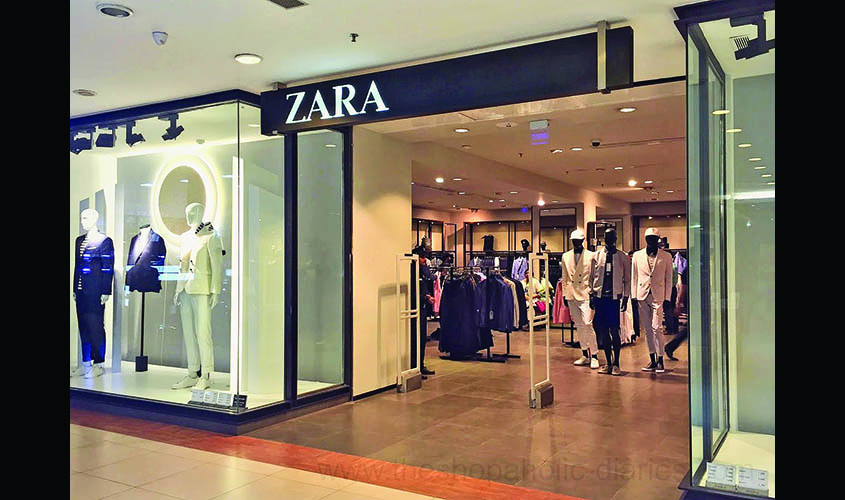Global brands are gaining more popularity with each passing year, and have also started collaborating with Indian retail companies to make their products readily available in the country. Luxury brands like Gucci, Dior, Zara, Armani have already captured the luxury market in India. In addition to that, online shopping portals have also facilitated the entry of these brands in the luxury segment here.
Italian brand Kiko Milano, in September 2016, made its first entry in India and launched its first store at the DLF Mall of India in Noida, followed by a new store in DLF Promenade in Vasant Kunj; it has now launched its third store in the country, which is also its 1000th store worldwide. Not only this, Coach Inc., the leading New York design house of modern luxury accessories and bags, celebrated the launch of the first Coach store in New Delhi at DLF Emporio recently.
As these brands have successfully positioned themselves in the country, Guardian 20 spoke to leading company and designers to speak about this growing market. Genesis is a marketing and distribution partner for 15 International luxury and premium brands and is a joint venture partner with three others — Burberry, Canali and Villeroy & Boch for India.
Nikhil Mehra, CEO, Genesis Group, says, “India has one of the youngest and largest consuming populations in the world today, only next to China. These millennials are the next set of aspiring shoppers for brands. According to a recent estimate, the Indian luxury market is about $18.3 billion and is growing at a compounded annual growth rate (CAGR) of about 25%. Also Knight Frank’s ‘The Wealth Report’ states that in the last decade, India added around 500 new Ultra high-net-worth individuals (UHNWIs) annually, and over the next decade the number will approximately go up to 1000 per year. These estimates are optimistic by all standards and India is a potential future asset for the global luxury industry. It will be the next China with an added advantage of the youngest consuming population.”
“India has grown beyond the tagline of the third largest populated country in the world. People have started spreading their wings in the fashion spectrum.”
If the Indian market is analysed properly, it has always been a diverse market, catering to the needs of various economic divisions. The increasing exposure to fashion trends and the growing sense of “Brand consciousness” and access to internet are some of the biggest reasons that international brands are investing in India. But Kolkata based designer Rashi Kapoor says, “India has grown beyond the tagline of the third largest populated country in the world. People have started spreading their wings in the fashion spectrum. And throughout history we find evidences of kings patronising jewels, automobiles and garments crafted by these international designers and fashion houses. So it’s but natural for them to make their strong presence felt in the form of their own outlets.”
India has slowly taken steps for becoming the next luxury market in the field of international brands in the world. In this regard, designer Vedika Merh says, “Definitely, the niche for the luxury goods has been increasing rapidly. Luxury brands have been increasing local retail outlets in India, in different cities each year. This trend is a motivating factor for other international luxury brands to jump in. This chain of events will make India the next big luxury market for such international brands.”
Designer Punit Balana says, “I think India’s share in the global luxury market is presently 1-2% and sales of luxury goods grow faster in India than anywhere else in the world. In the last few years, according to the reports of The Confederation of Indian Industry (CII) between 2015 and 2016 the Indian luxury market grew from $14.7 billion to a whopping $18.6 billion at a growth rate of 25% year on year.”
But with the coming up of such famous and premium global brands, it has also somewhere affected the local brands in the country. But the designers take it in a positive way. “Ironically, I believe it pushes the envelope for Indian designers. For instance, with our new brand, Love Generation, we can design keeping international style and fashion in our mind because that’s what a consumer wants today. India is the market not only for luxury brands but high street fashion as well. Travel has been easier and with digital marketing people are more connected than ever. Whether a collaboration is dropped in Japan, Europe or New York, we live it in Bombay!” says designer Nandita Mahtani.
Designer Punit Balana says, “The growing purchasing power and rising influence of the social media have enabled Indian consumers to splurge on the good things. The Indian consumer sector has grown amazingly and both Indian e-international brands are performing equally well, so in that case because of the growing market global and Indian brands both have made their own markets.”
The nature of consumption in India as well as growing online buyers have increasingly forced these premium brands to take centre stage in the Indian subcontinent.

